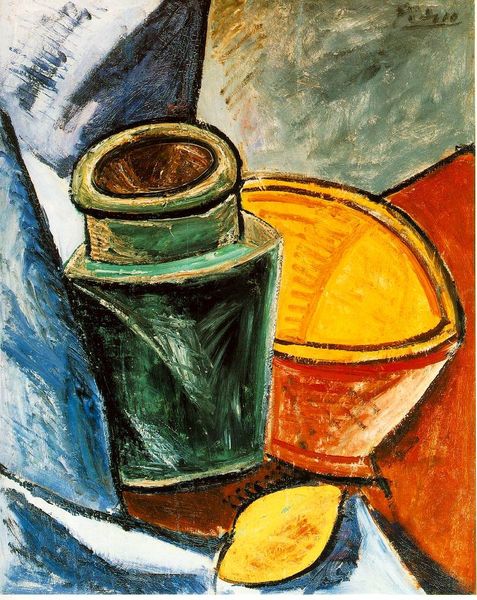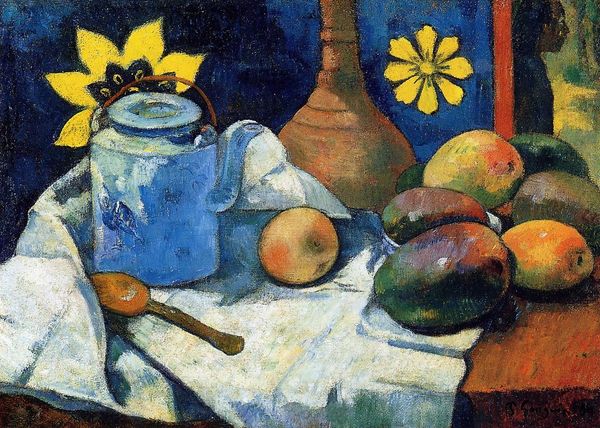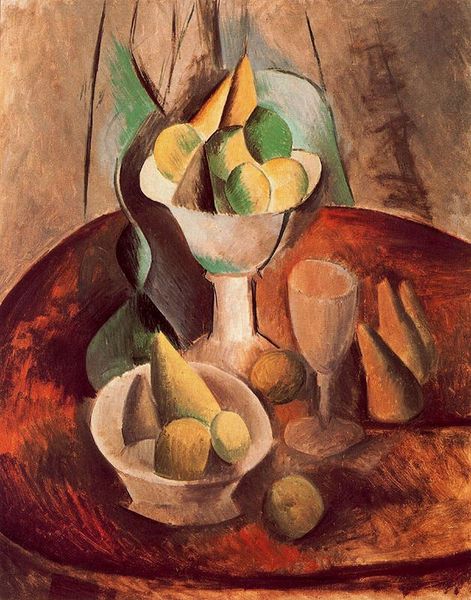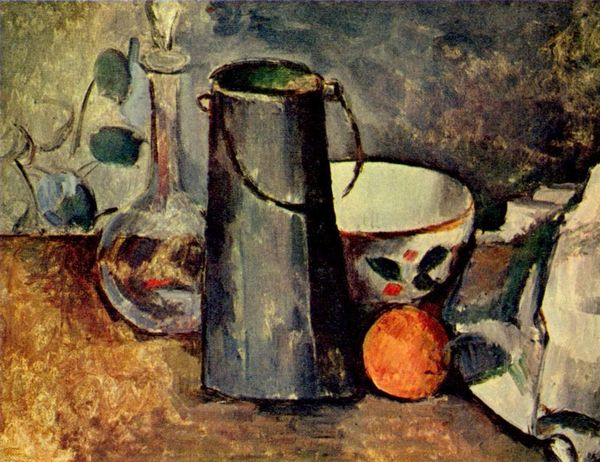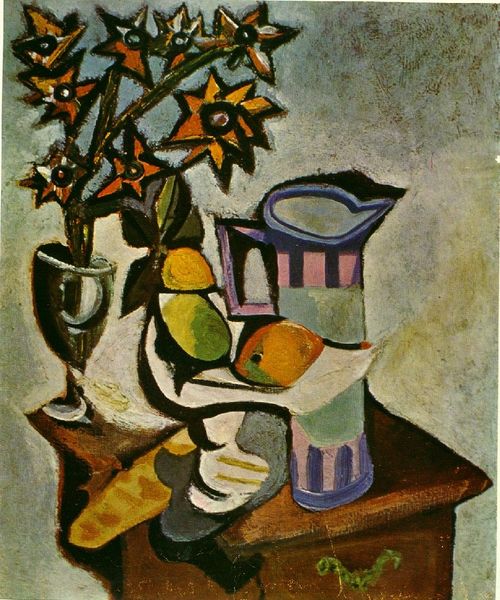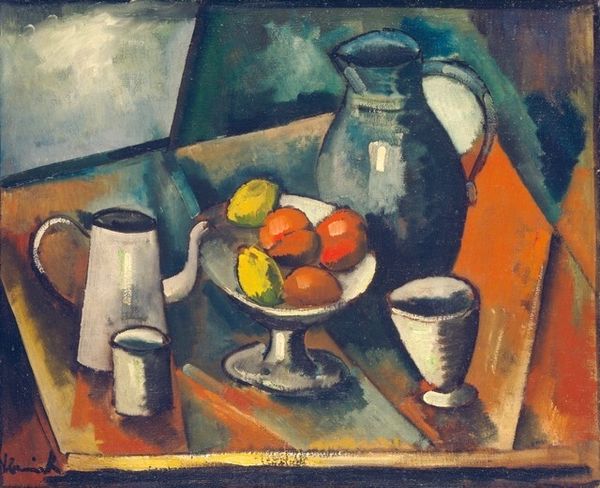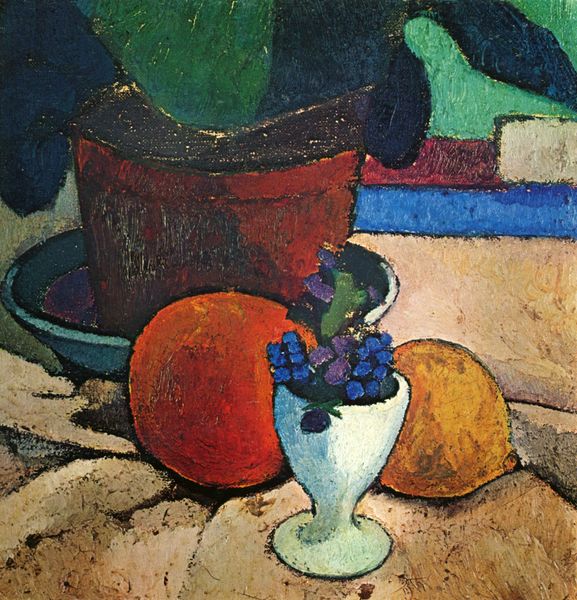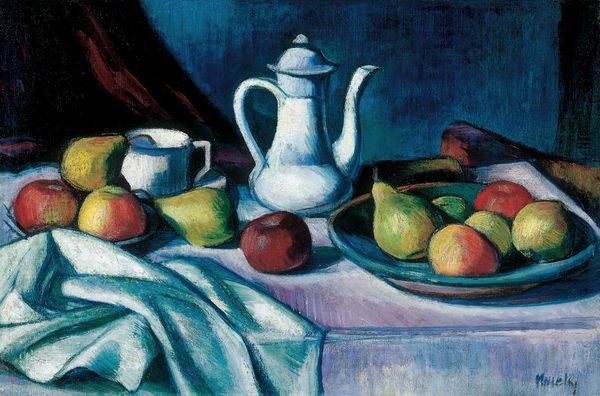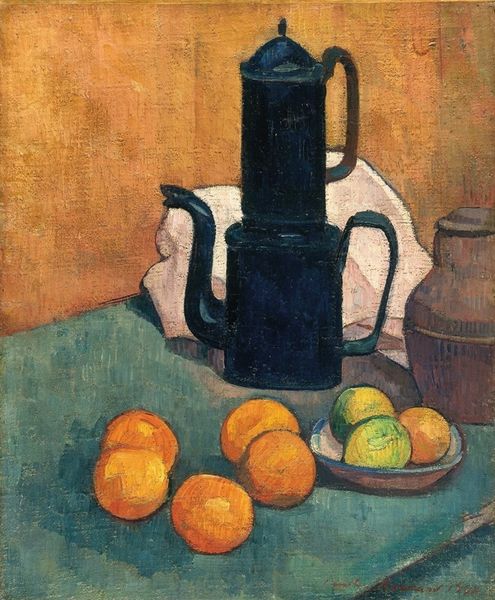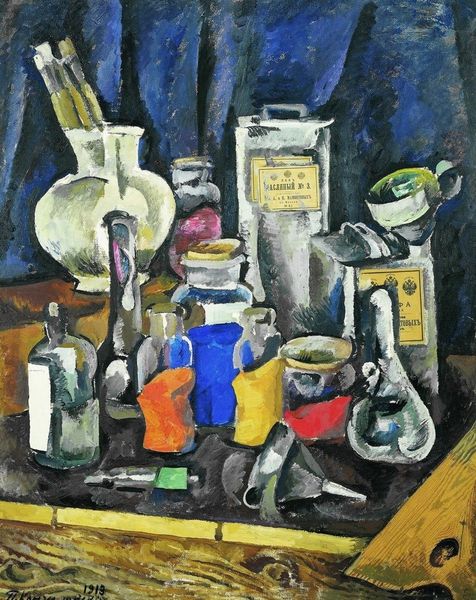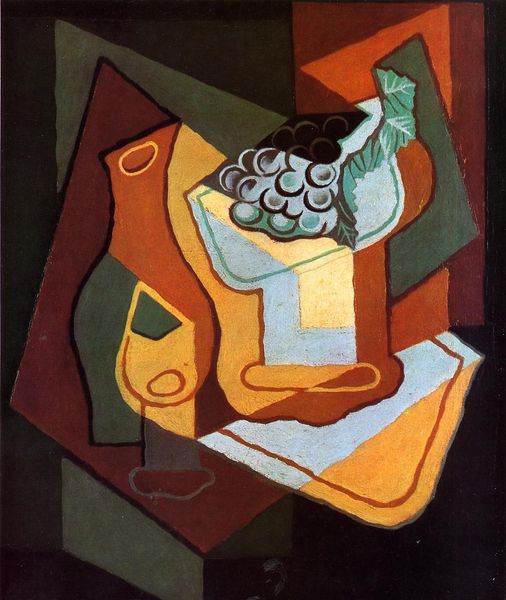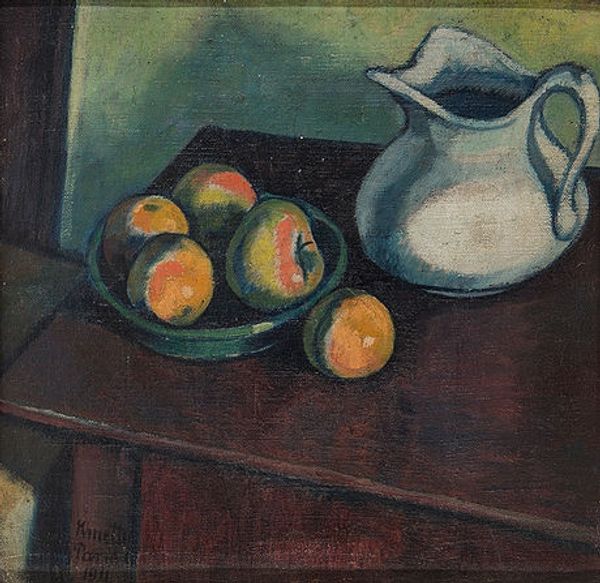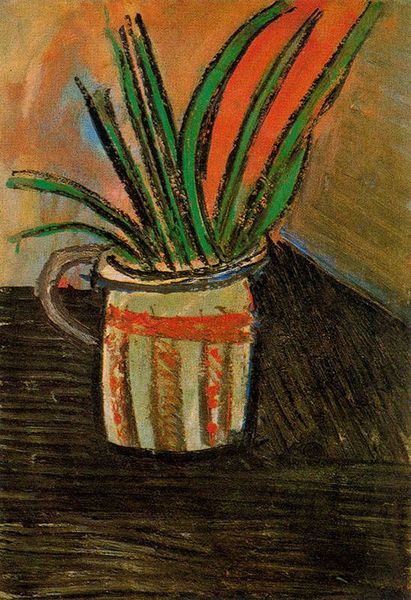
oil-paint
#
cubism
#
oil-paint
#
oil painting
#
geometric
#
modernism
Dimensions: 55 x 46 cm
Copyright: Public domain US
Curator: This is Pablo Picasso’s “Pot, Glass and Book,” painted in 1908. It exemplifies the shift toward Cubism in his artistic journey. What strikes you first? Editor: The layering of forms, undoubtedly. And the palpable presence of the paint itself; the very stuff of oil paint feels emphasized. It’s not about illusionism, but rather drawing attention to its raw physicality. Curator: Agreed. Observe how Picasso renders these ordinary objects into geometric facets. The book's corner juts forward, almost aggressively. What about the objects themselves, beyond just their representation? Editor: The juxtaposition is quite fascinating when viewed through a lens of materiality. You’ve got glass – produced through heating silica sands with soda ash and limestone, that's representing high art or leisure, juxtaposed against something made from earth—that utilitarian vessel implying the stuff of ordinary life, food storage perhaps. Then we have a book...made of paper and glue...a vessel for knowledge, so what does the work as an arrangement evoke about daily practice? Curator: Symbolically, consider that the glass is empty. The potential it holds contrasts with the solid, contained nature of the pot. Is the book open or closed? It appears shut off, holding secrets, potential knowledge locked within. Consider the enduring association of containers and vessels with hidden truths, myths, or repressed emotions in painting? Editor: Right. So, there’s this play between interiority and exteriority expressed through the mediums. What are the real relationships of power within this visual composition? The thick application of paint flattens the depth; the object is rendered secondary to the artistic act itself, but the color implies depth too. Curator: The blues and browns evoke the cerebral against the earthly—or is the earthen pot aspiring towards some sort of elevation as a modernist artifact? And despite the fracturing of form, there’s a remarkable sense of stillness, like a suspended moment ripe with meaning. Editor: Exactly, and a real tension generated, the artist drawing on many centuries of material use while also emphasizing art's capacity to stand outside these traditions via his revolutionary approach to form. Food for thought! Curator: Indeed. A small-scale moment brimming with material and metaphor.
Comments
No comments
Be the first to comment and join the conversation on the ultimate creative platform.
